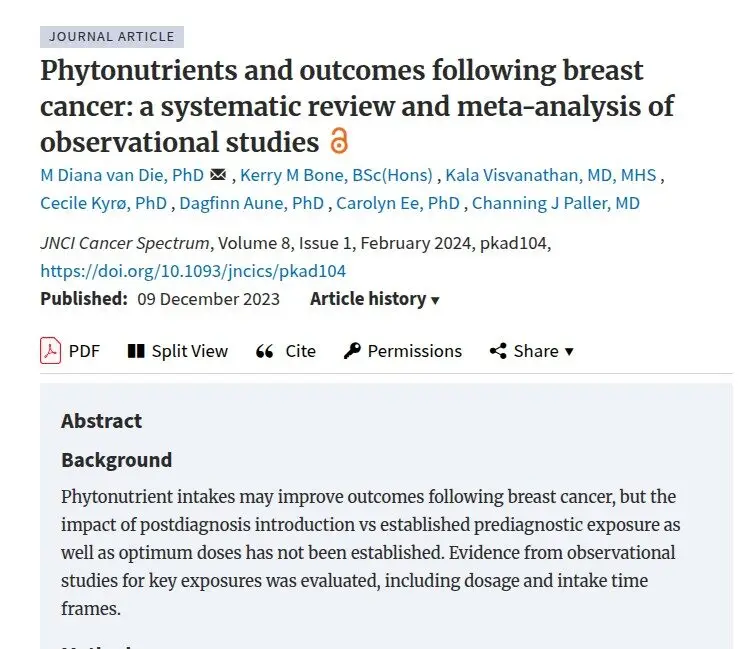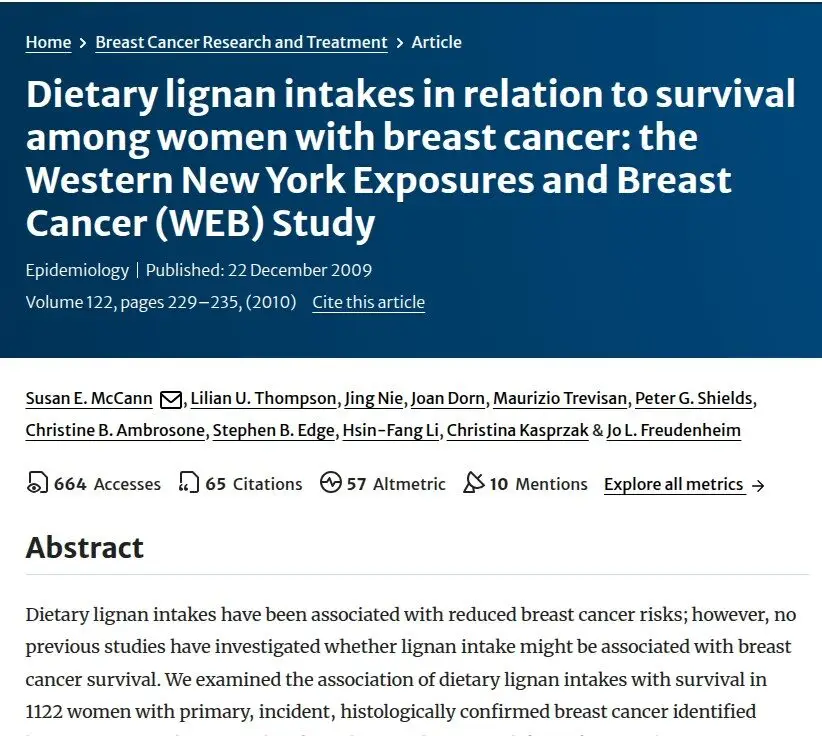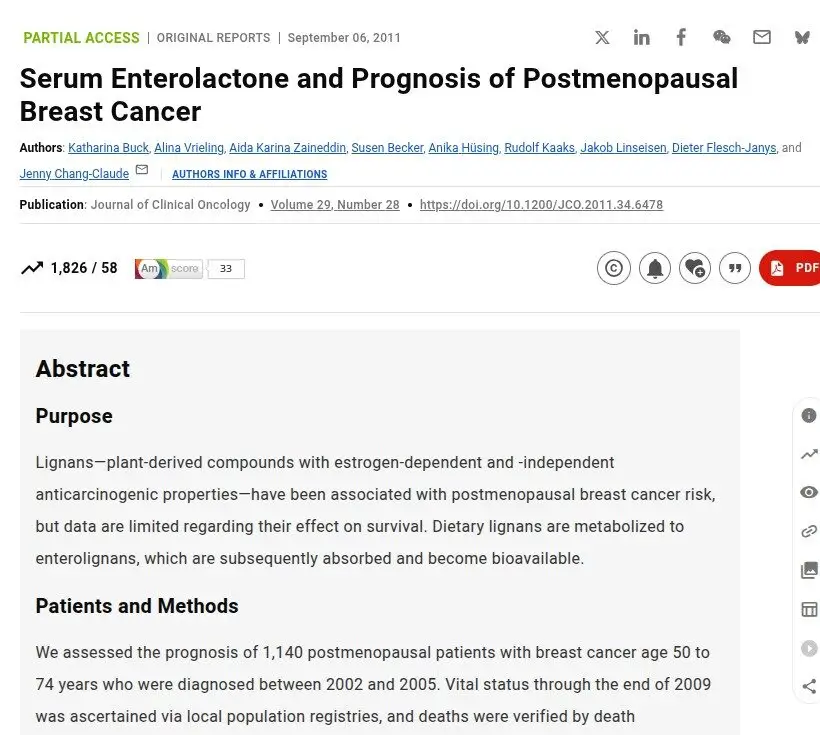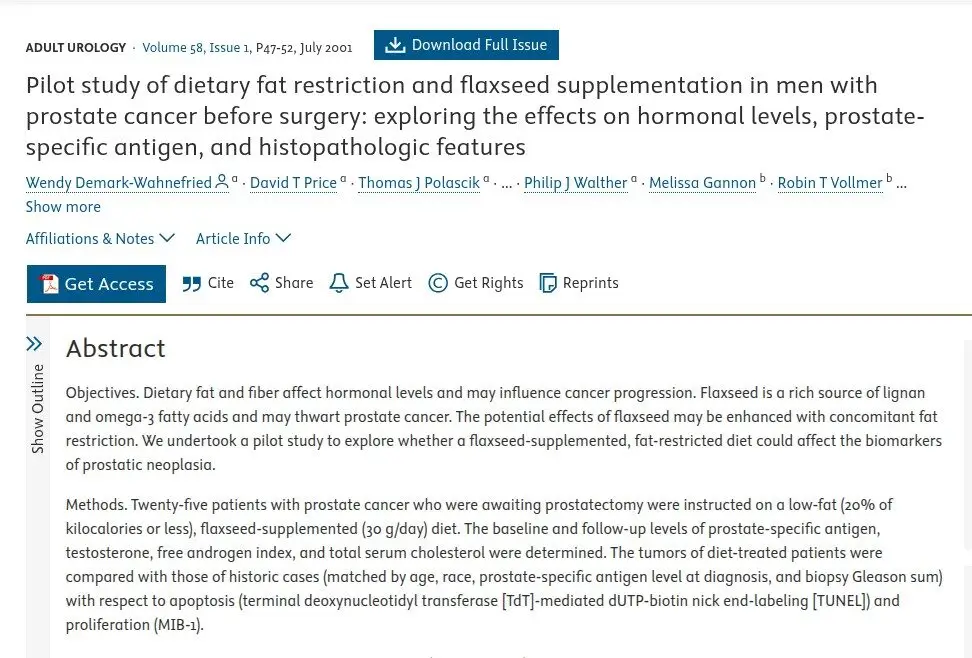Flaxseed, not oil, and flaxbread are concentrated sources of lignans, plant based estrogens, which are digested, or metabolized, to enterolactone. Crushed or milled seeds increase absorption, and can be a simple way to get daily amounts into the diet. Studies are primarily in breast and prostate cancers, due to the plant based estrogen effects of lignans
Case control studies compare outcomes for higher vs lower dietary lignan consumption, or the resulting levels of enterolactone. The number of studies are limited, but consistently find significantly reduced relative risk levels in the post-diagnostic period. Often 25 to 30% improvements in relative overall surival, both breast cancer related and any-cause mortality. And for postmenopausal women especially ER- , this can be 50 to 70%. (see Examples)
Pilot studies show some evidence of reducing markers of cell proliferation levels, including reducing pre-cancer activity levels in high risk breast cancer cases. The effects, in one study, are partly linked to reduced inflammatory marker c-reactive proteins ( See Highlights). Some of which relies on overall lignan consumption from all sources. Older research reported increased risk of breast cancer incidence in pre-menopausal women, which more recent studies have reversed.
Population or case controlled meta-analysis link higher pre-diagnostic dietary levels to lower incidence rates in breast cancer (see Examples). Studies show beneficial effects in vascular health through reduced blood pressure, and some anti-inflammatory actions in various auto-immune conditions including kidney protective. Evidence for anti-metastatic actions is limited, some reports highlight reduced VCAM-1 markers as proof of lower platelet adhesion.
Flax seeds can interact with hormones like estrogen, always seek qualified medical advice.




